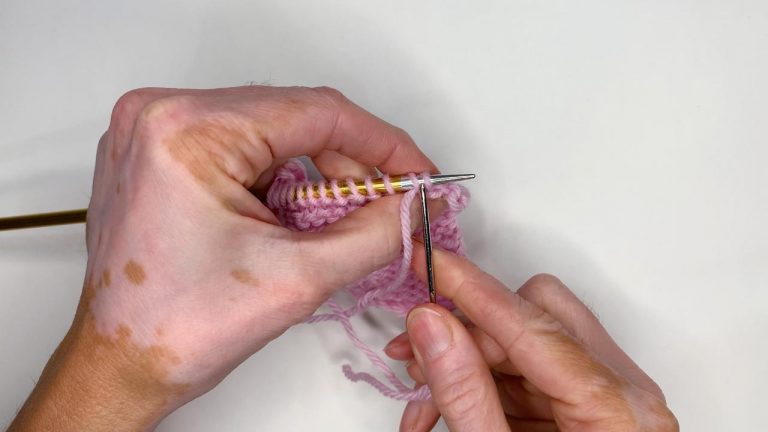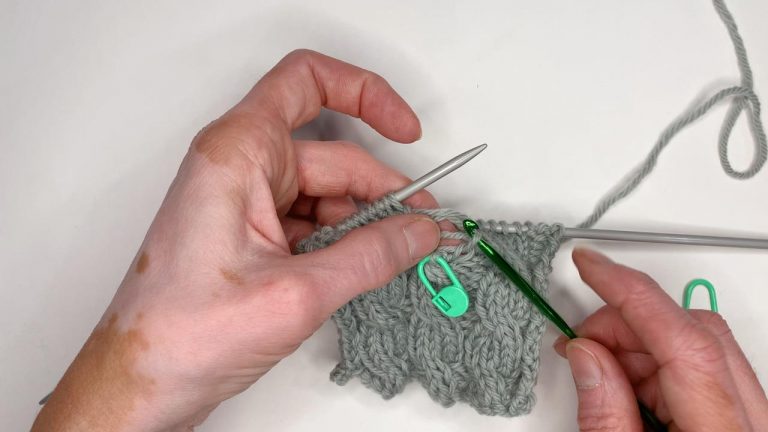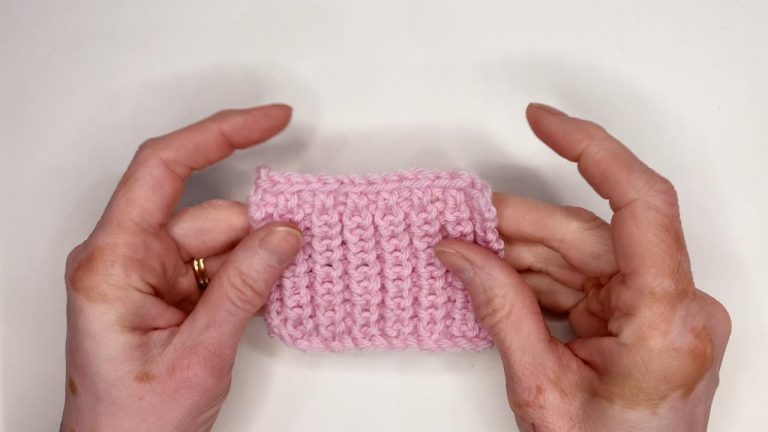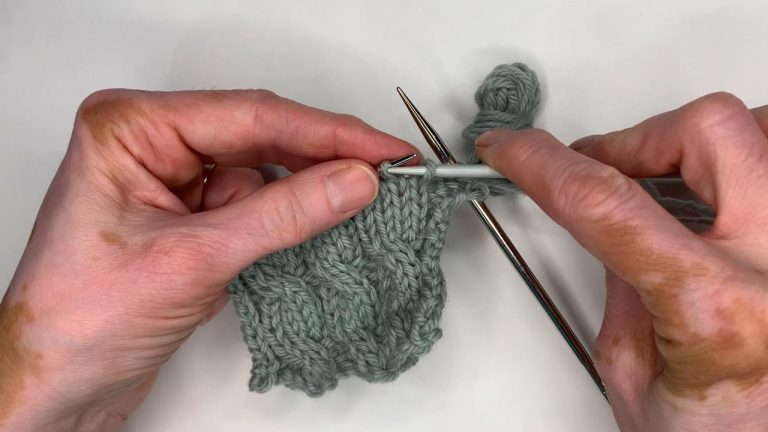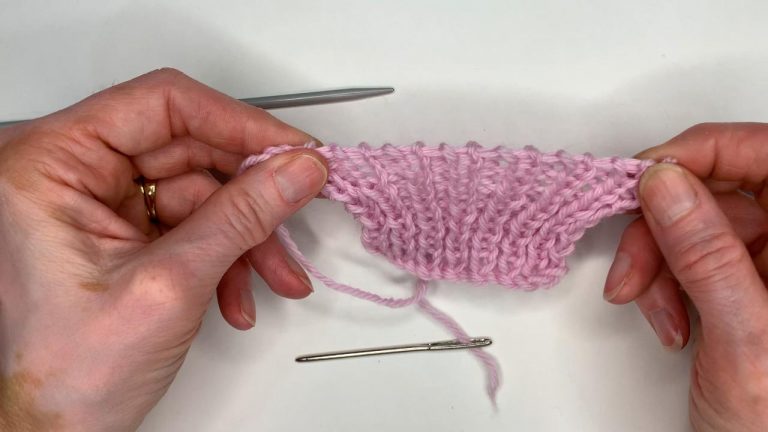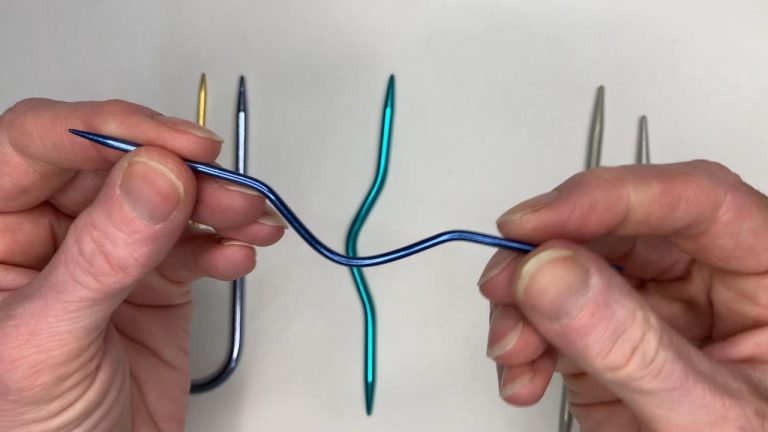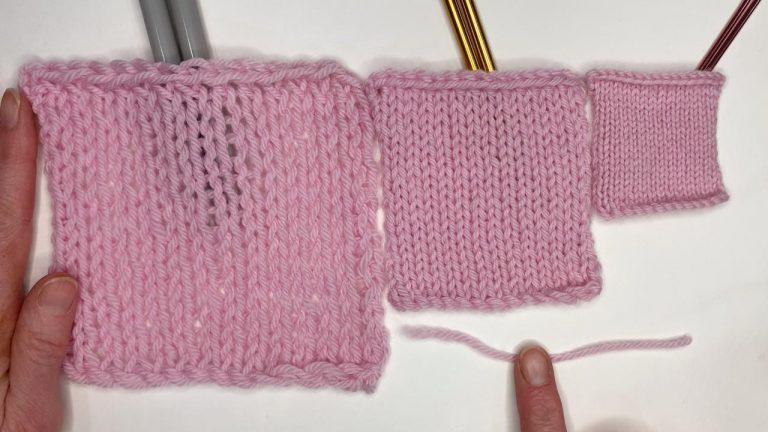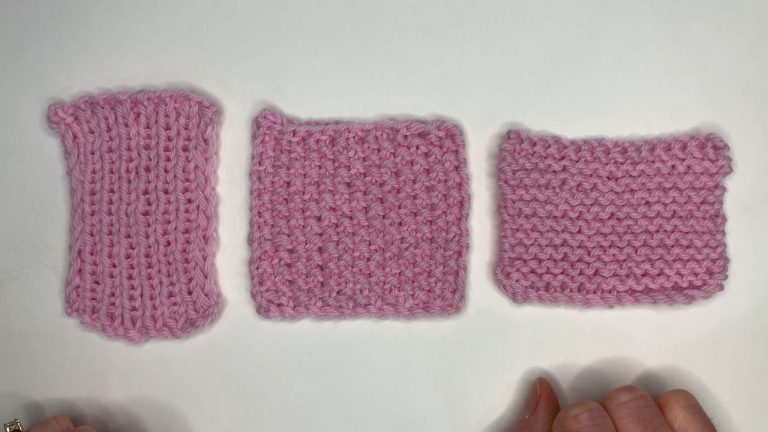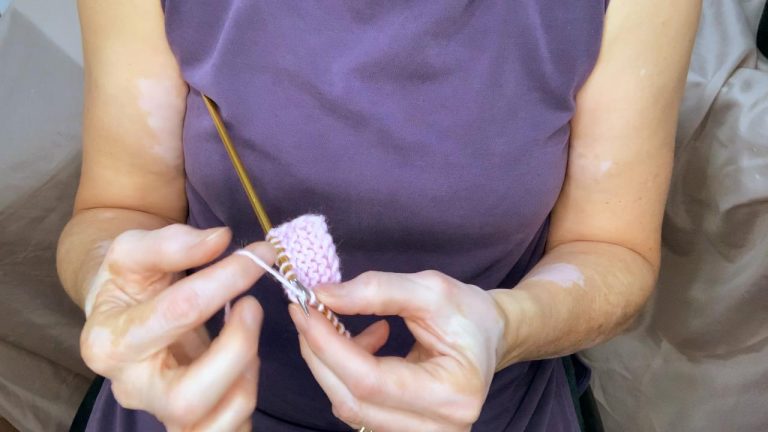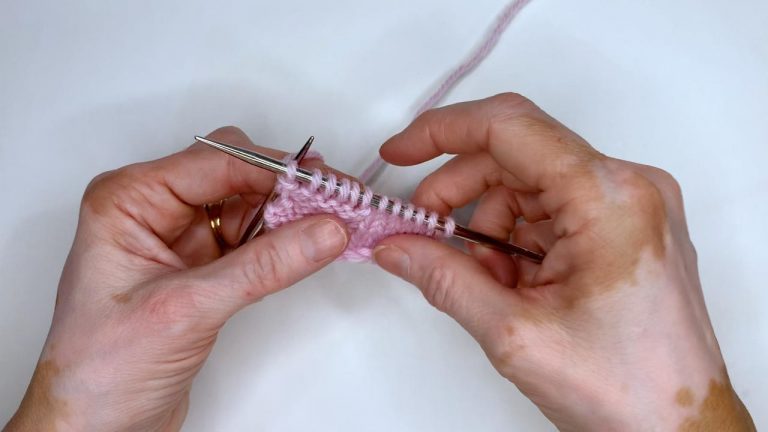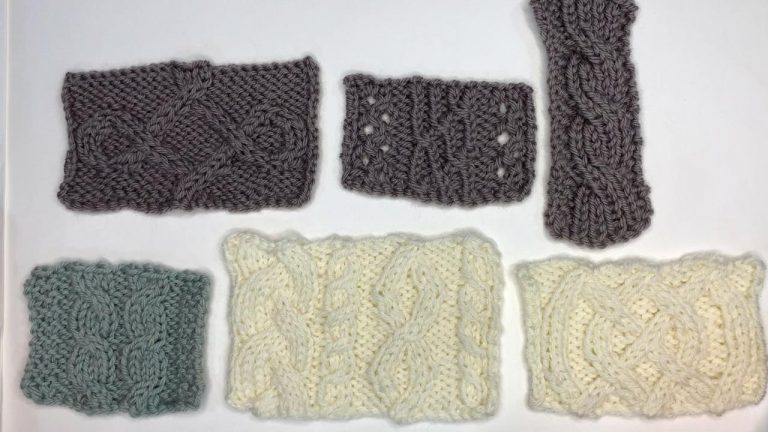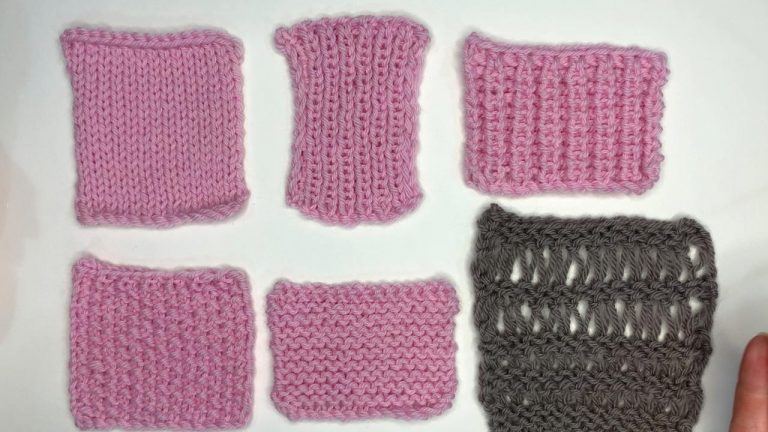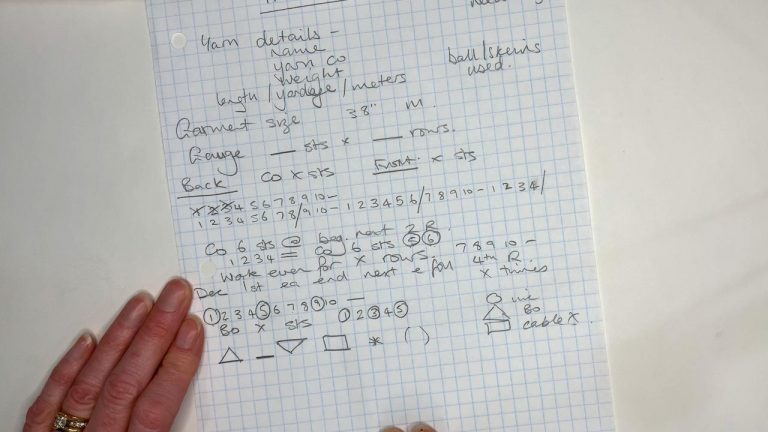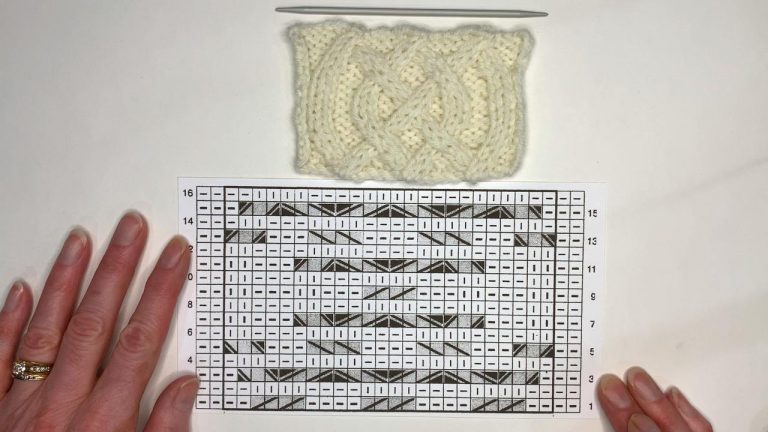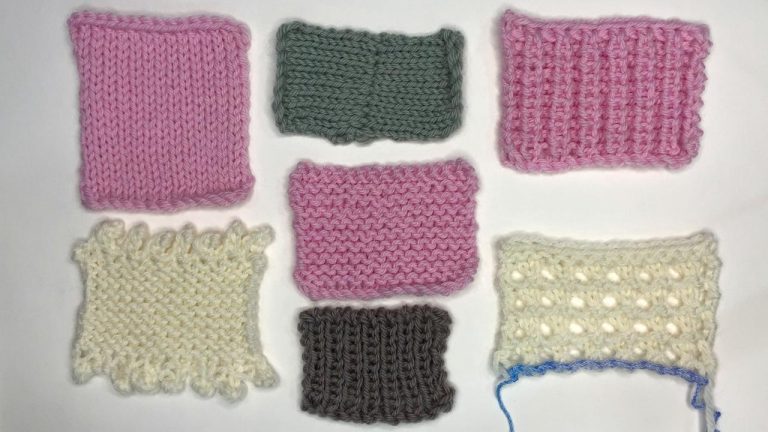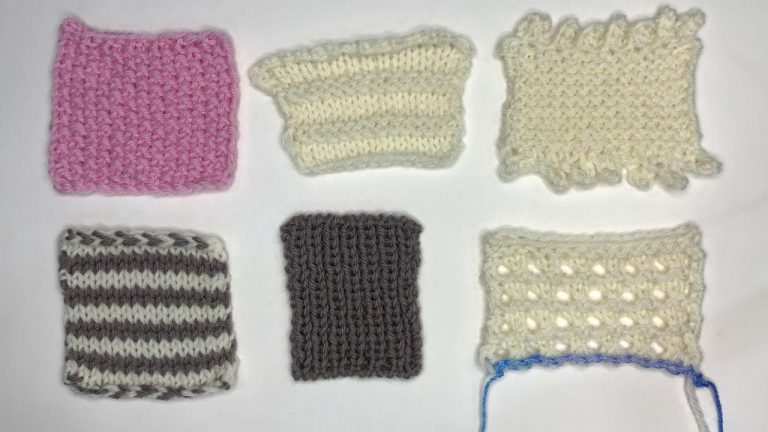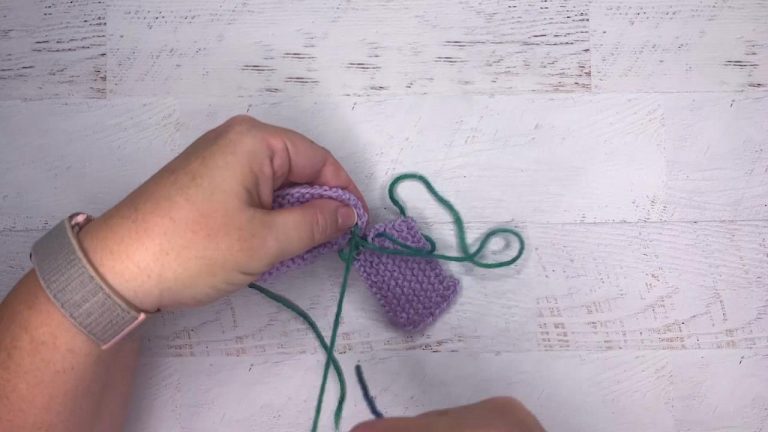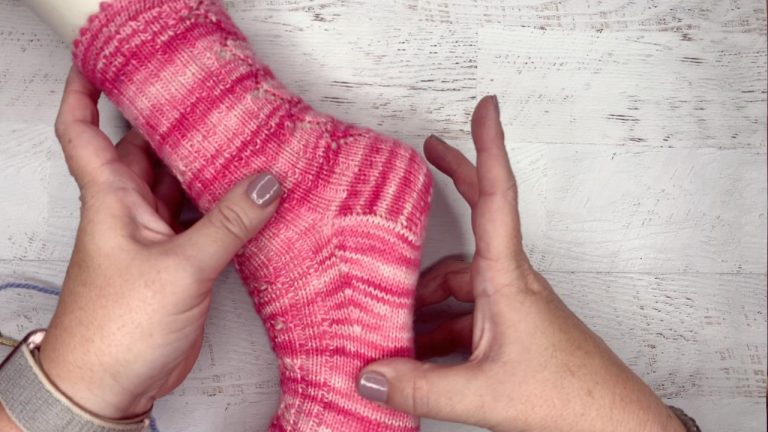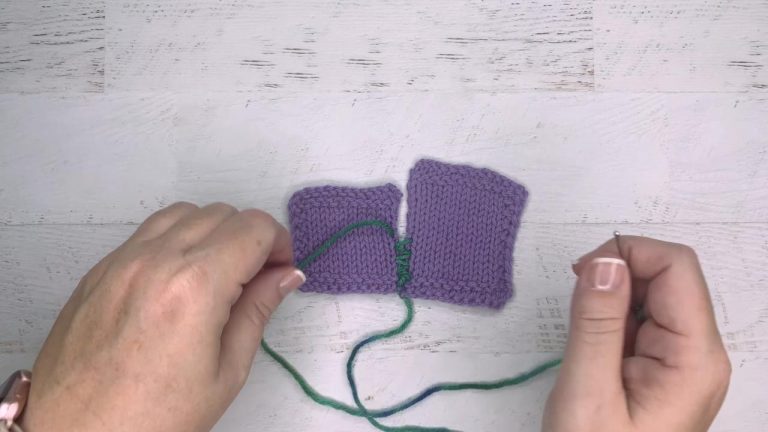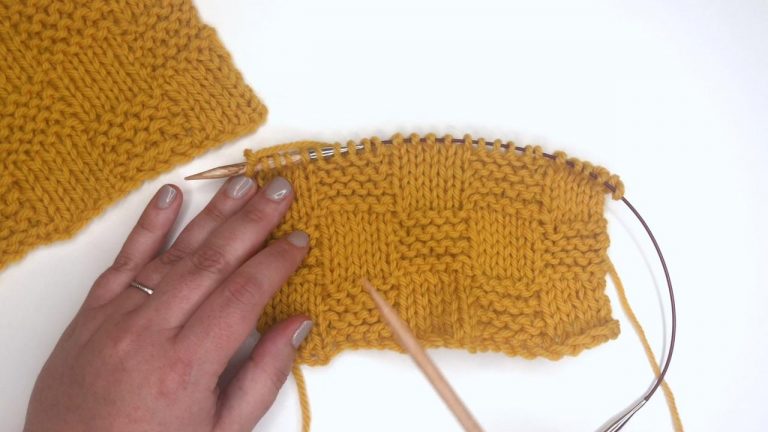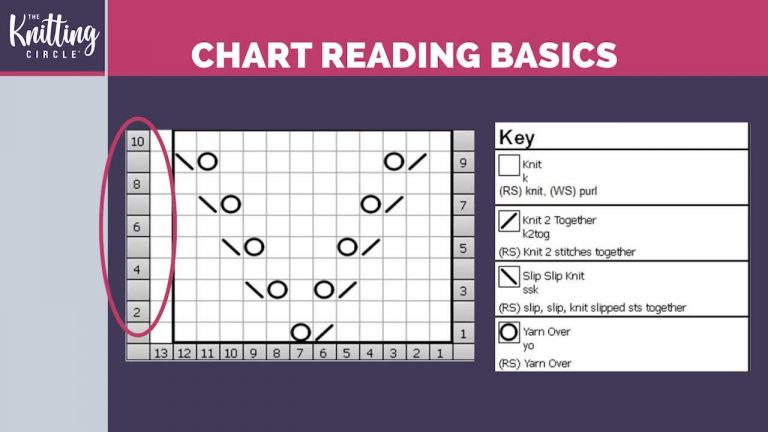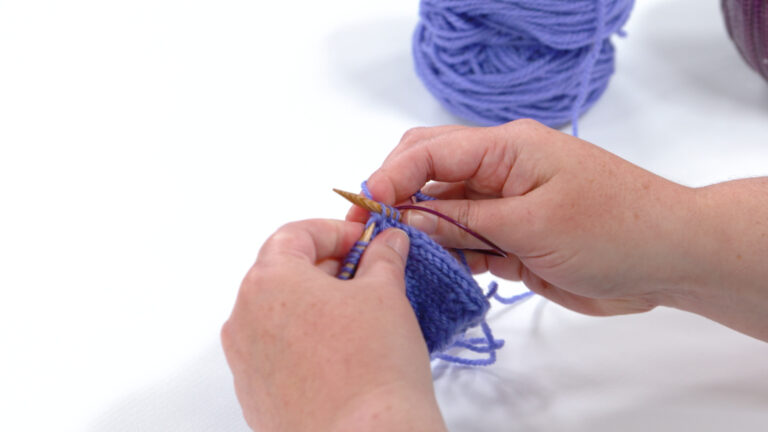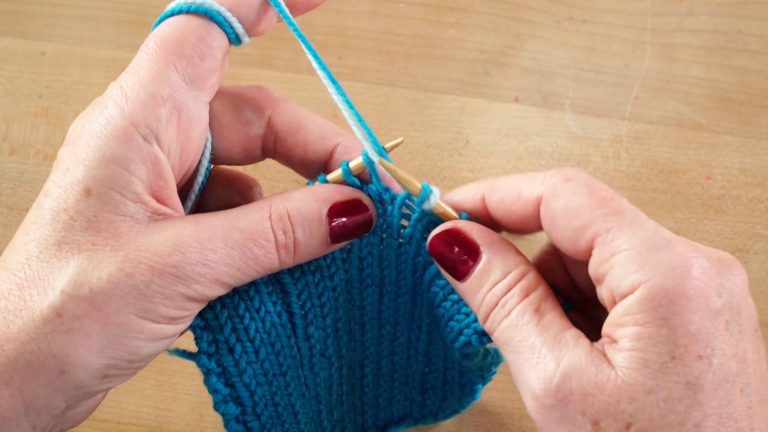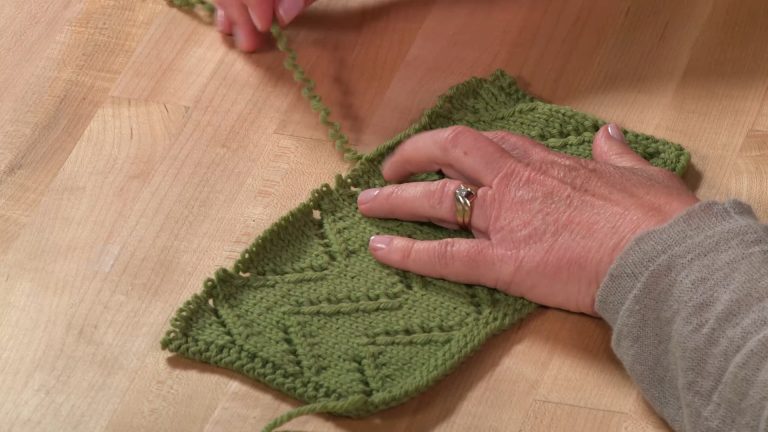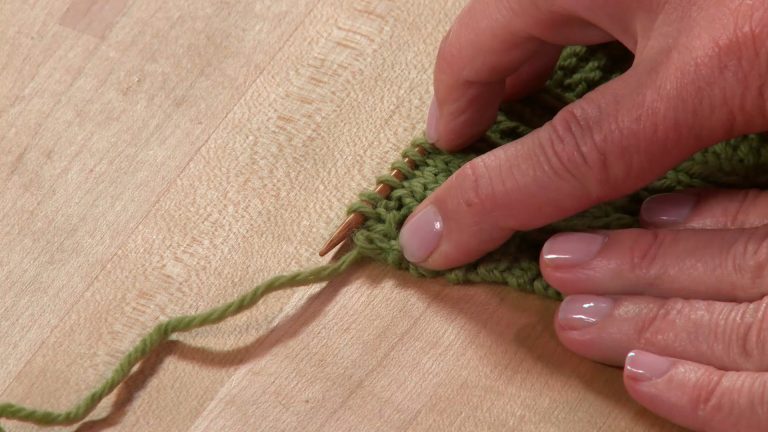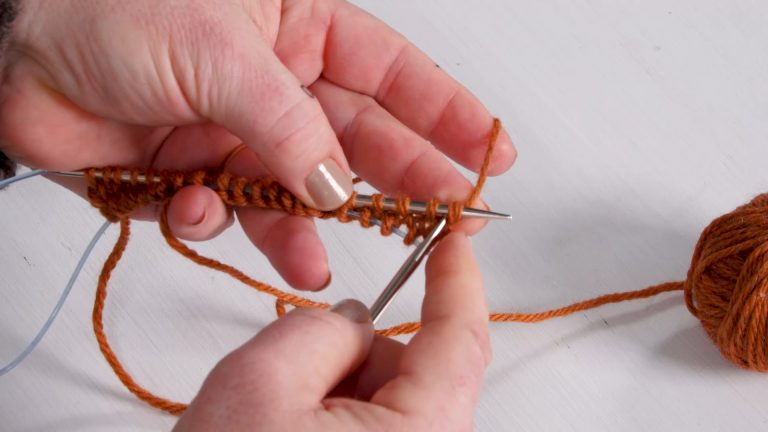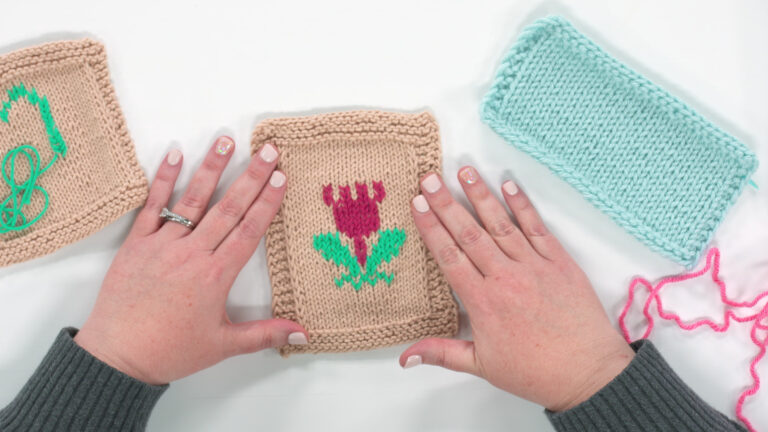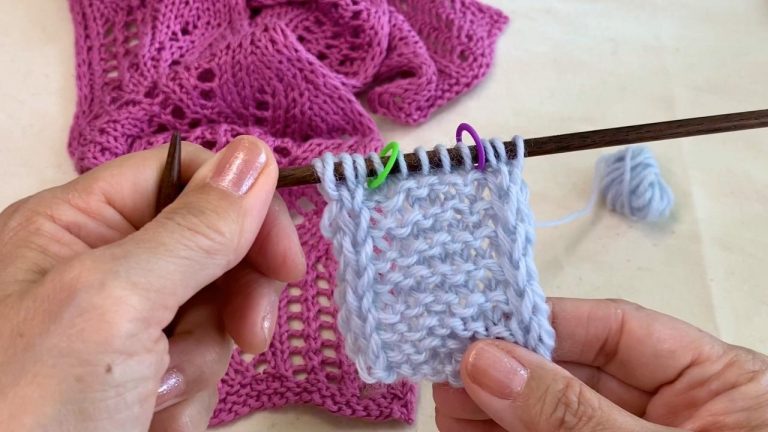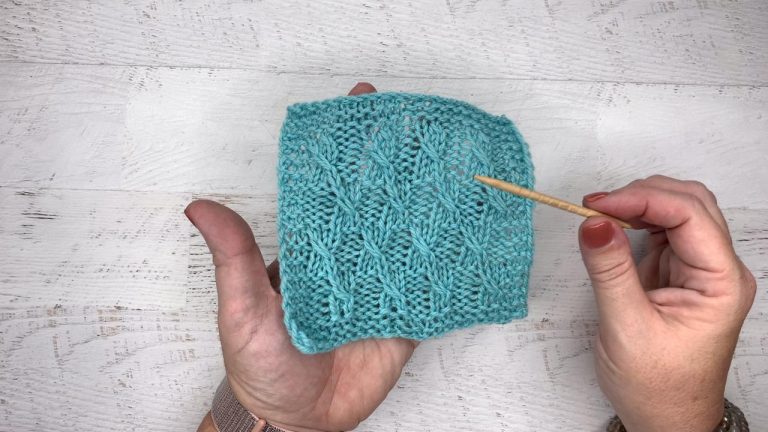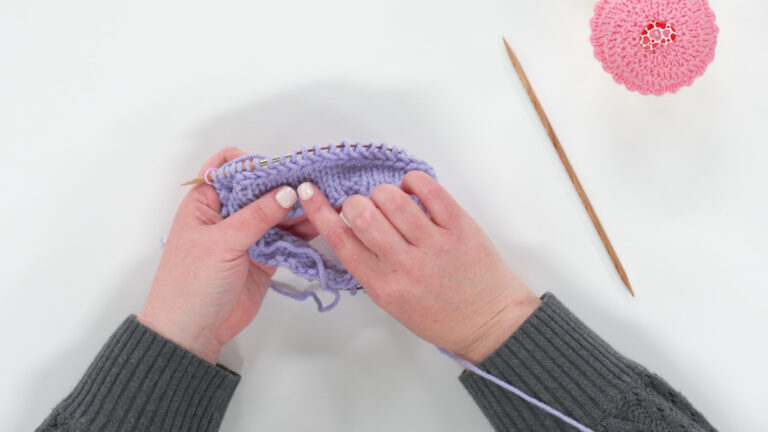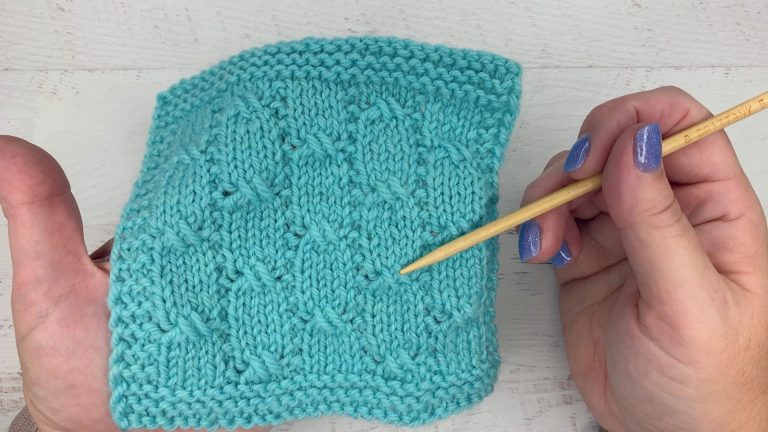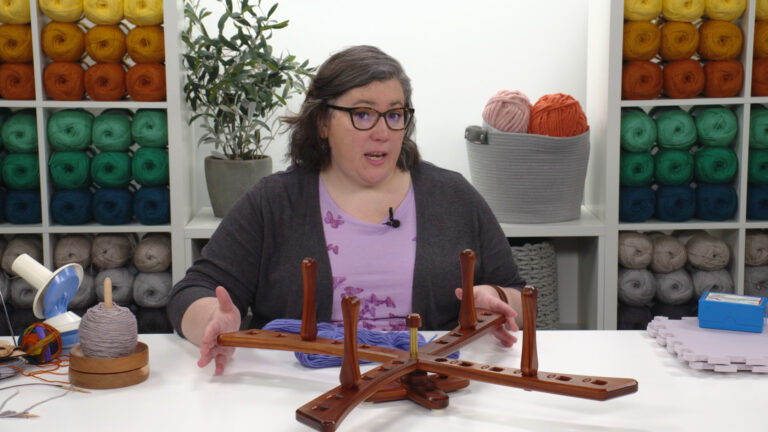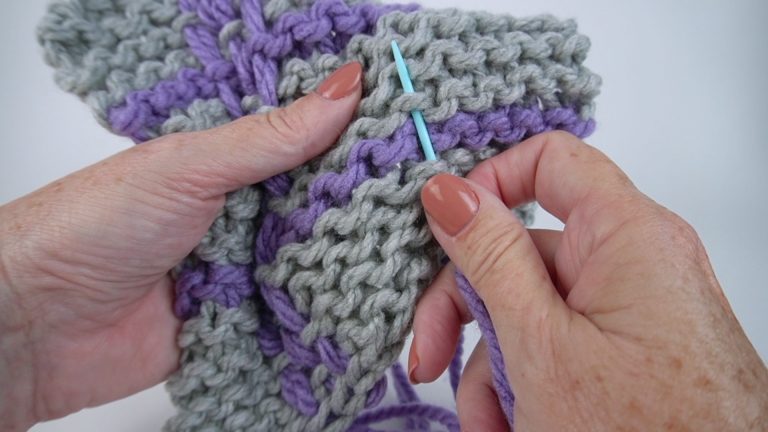
Tips for a Neat Knit Selvedge
Jill WrightA selvedge edge is the stitch (or stitches) worked at the beginning and end of a row. These edges are typically used for seaming knitted pieces together, but they can also be decorative. In this video, Jill Wright examines three different selvedge edges.
The first swatch that Jill explores is one with a slipped stitch selvedge. This selvedge edge is created on both sides of the fabric by slipping the first stitch of every row. Jill prefers to slip the stitches as they are presented on the needle. If the first stitch is a knit stitch, she slips the stitch knitwise. If the first stitch is a purl stitch, she slips the stitch purlwise. Jill uses the slipped stitch selvedge for projects that are not going to be seamed. These selvedge edges are also useful for picking up stitches to knit in another direction, like for a border for a lace shawl.
The second swatch features a Stockinette stitch selvedge. The stitches are either knit or purled. This creates a nice, structured selvedge edge, which is easy to see for seaming pieces together.
The final swatch shows a garter stitch selvedge edge. Jill shows a swatch of garter stitch, but a garter stitch selvedge can be worked with other knitted fabrics and stitch patterns as well. The garter stitch selvedge is created by knitting the first stitch every row. This is also a nice selvedge for picking up stitches or for seaming.
A knitting pattern will typically tell you how the selvedge edge is to be worked; however, you can experiment to find the best selvedge for you and your knitting. Some knitters prefer one method over another.
Explore videos by Jill Wright
You may be interested in
Premium Membership
Unlock exclusive member content from our industry experts.
- 24/7 Access to Premium Knitting Videos, Projects, and Tips
- Step-by-Step Instructional Demos, Patterns, and Tutorials
- 50% Off Video Downloads Purchased in The Knitting Cirlce Shop
- Access to Ask the Expert Program
Unlock exclusive member content from our industry experts.
- 24/7 Access to Premium Knitting Videos, Projects, and Tips
- Step-by-Step Instructional Demos, Patterns, and Tutorials
- 50% Off Video Downloads Purchased in The Knitting Cirlce Shop
- 2 Full-Length Video Downloads to Watch Offline
- Access to Ask the Expert Program
Gold Membership
$379 Value
Get everything included in Premium plus exclusive Gold Membership benefits.
- 24/7 Access to Premium Knitting Videos, Projects, and Tips
- Step-by-Step Instructional Demos, Patterns, and Tutorials
- 3 Full-Length Video Downloads to Watch Offline
- 5 Full-Length Knitting Classes to Keep for Life
- 10 Printable Knitting Patterns
- Discounts on Purchase-to-Own Content in The Knitting Circle Shop
- Access to Ask the Expert Program
- Exclusive GOLD LIVE Streaming Events
